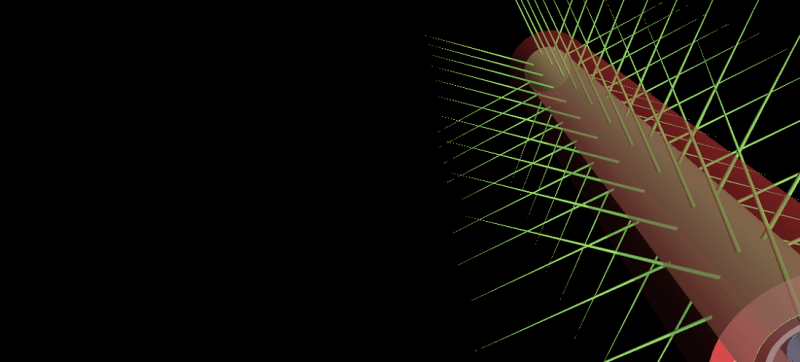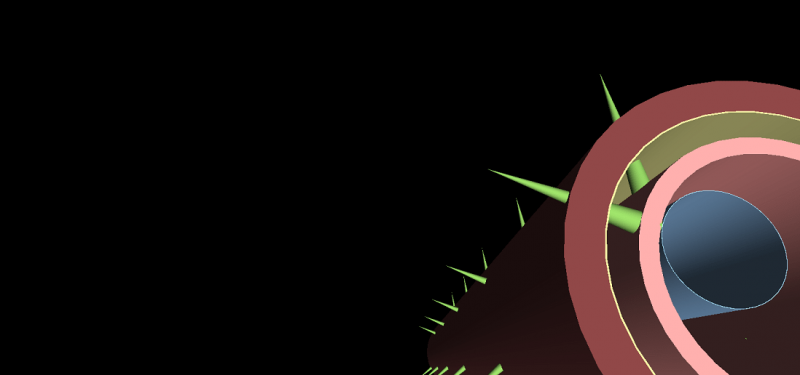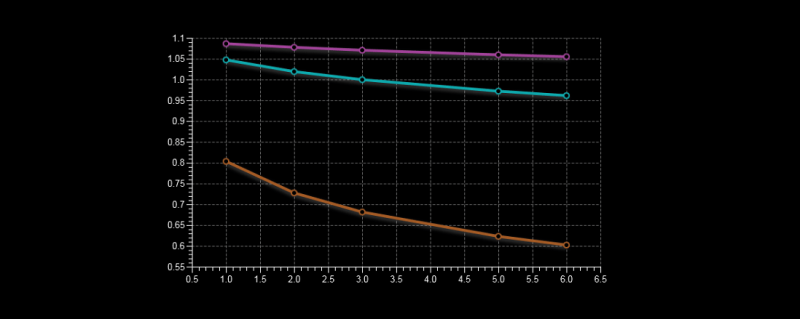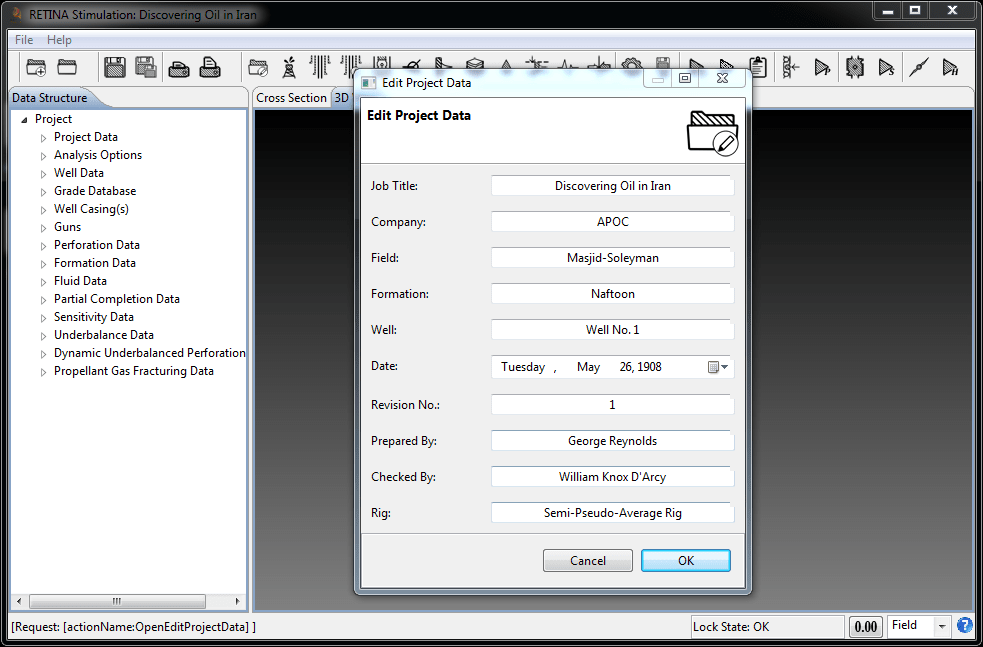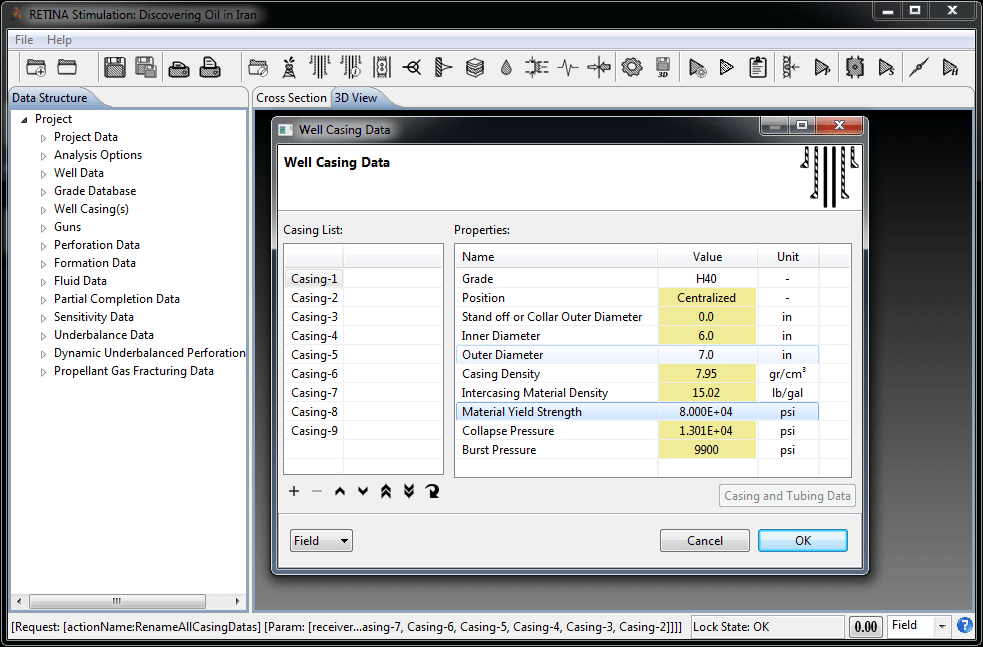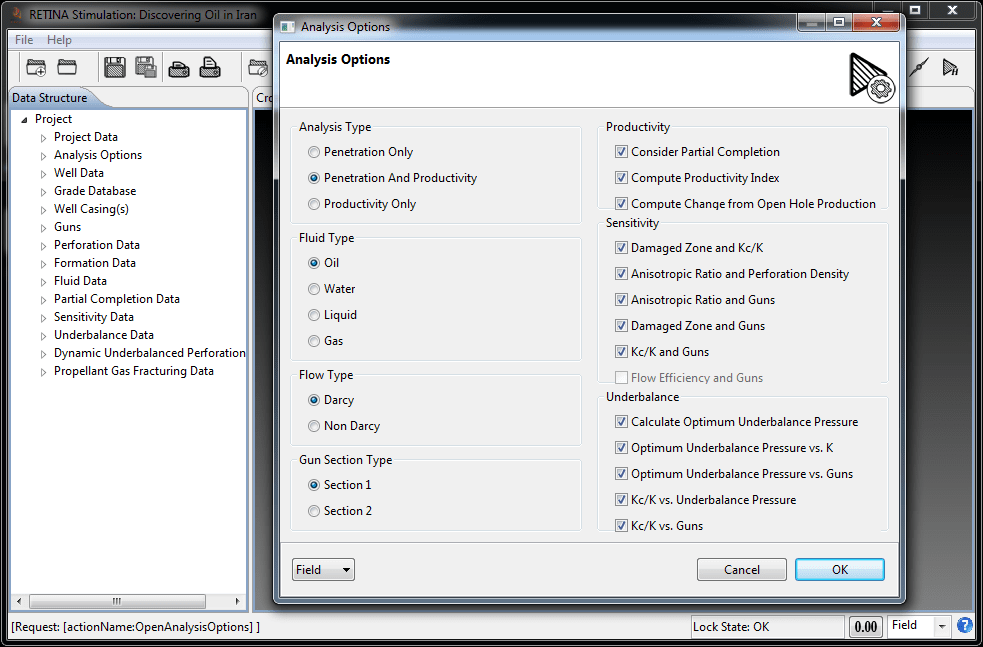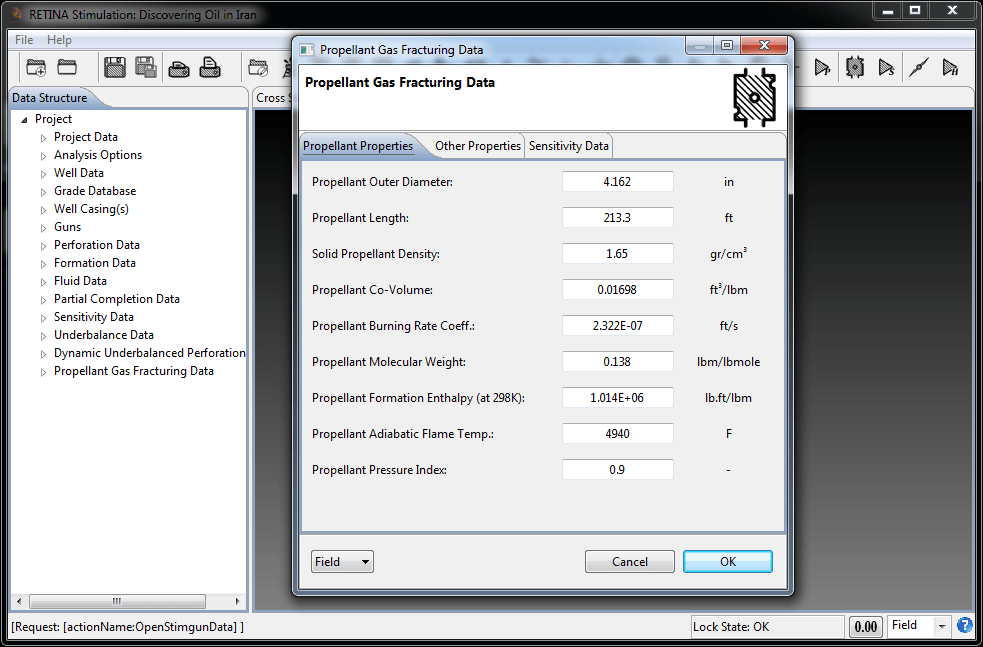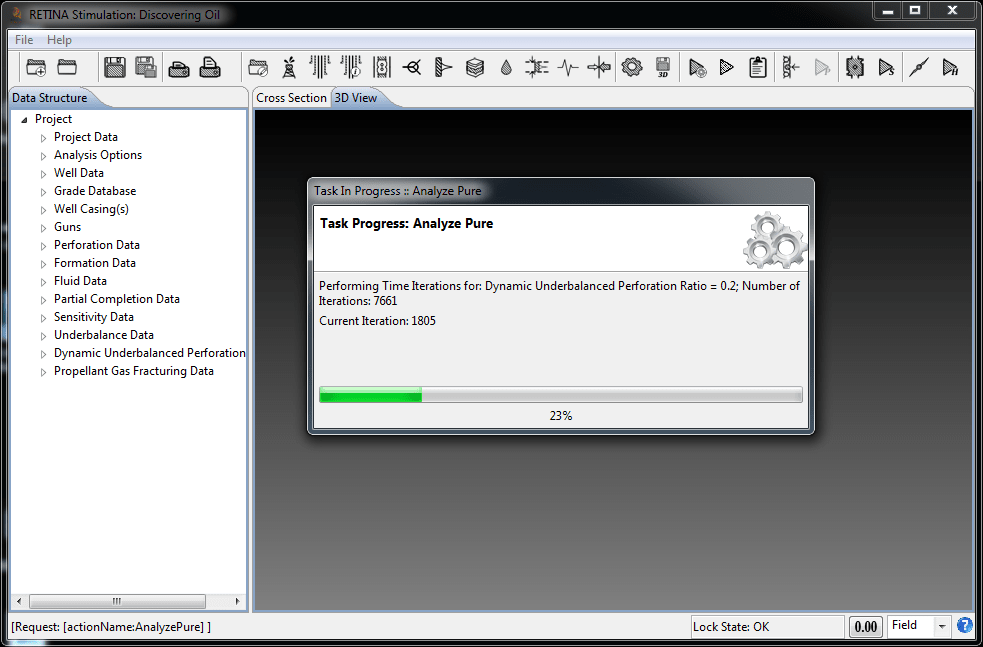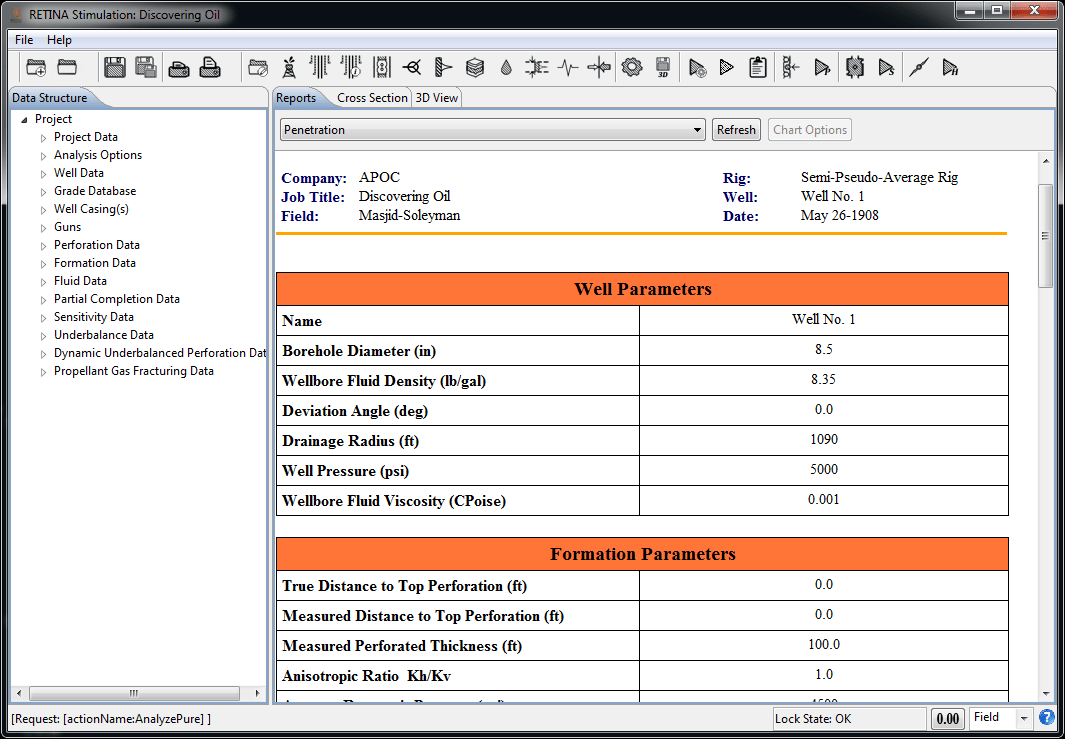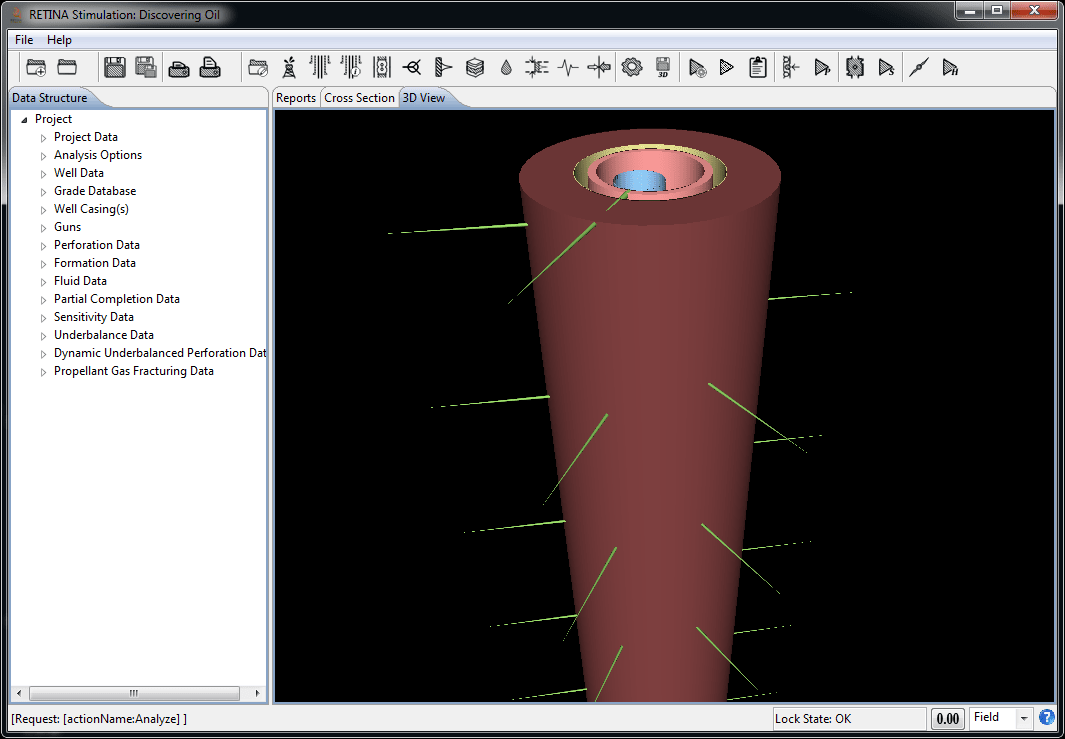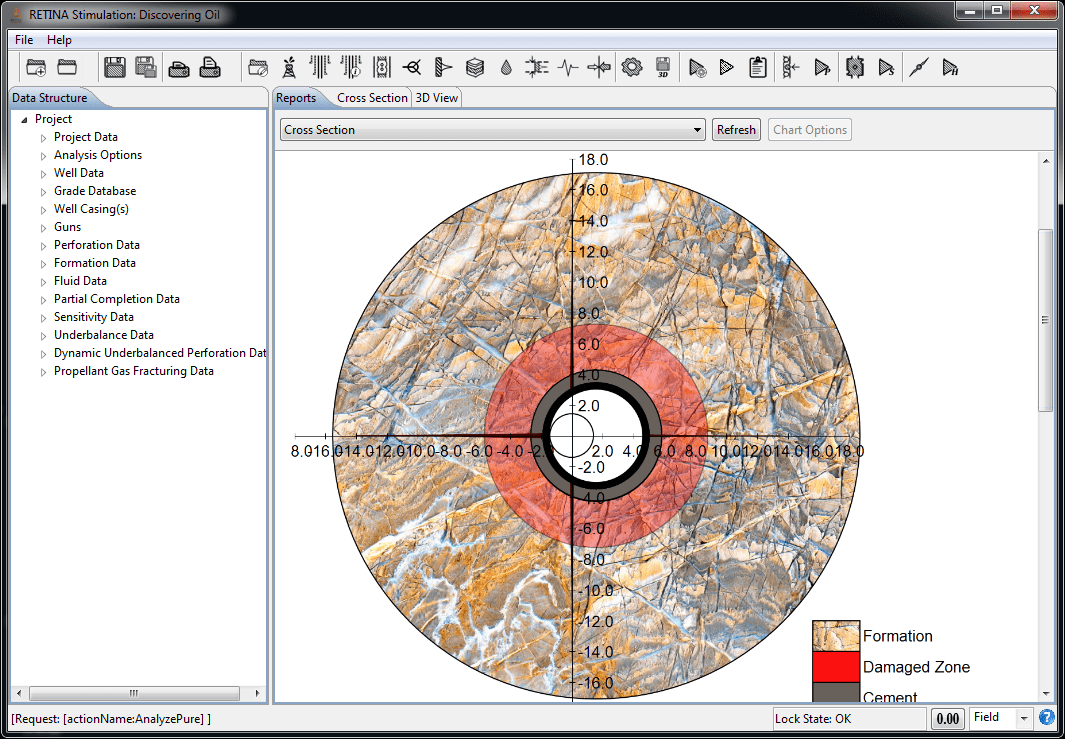Pre-Process
- 1. Completely user friendly and easy to use pre-processor
- 2. Darcy and Non-Darcy flow types
- 3. API 1st or 2nd sections penetration data
- 4. Control over unit system and the floating point viewing precision in each dialog
- 5. Gun/Casing and multiple Casing/Liner arrangements
- 6. Ability to define new casings and guns
- 7. Defining well deviation, partial completion, formation properties, formation heterogeneity, various gun types, damage zone, perforation crushed zone etc.
- 8. Initial well status of overbalance, underbalance or balance
- 9. New stimulation method of dynamic underbalanced perforation
- 10. New stimulation method of propellant gas fracturing
- 11. Stimulation method of hydraulic fracturing
- 12. Validating model before simulation
Simulation
- 1. Classical penetration theory
- 2. Casing and cement effect on perforations
- 3. Effect of rock compressibility, density and stresses on perforations
- 4. Skin/Productivity calculations based on semi-analytical correlations developed through extensive 3D finite element model
- 5. Gas volume released in explosion, gun internal temperature, and remaining gas in gun for dynamic underbalance perforation
- 6. Coupled solution for transient partial differential equations (PDEs) of pressure and flow in reservoir, well, and gun
- 7. Geometric combustion law for Flame propagation
- 8. Modeling fractures initiated by propellant gas as a set of wedge-shaped radial fractures
- 9. Instantaneous thermodynamic properties of fluids in all stimulation methods
- 10 Linear elastic fracture mechanics in addition to fracture fluid flow and continuity equations for hydraulic fracturing and non-linear PDE for fracture length and width
Post-Process
- 1. 2D cross section and 3D visualization
- 2. Penetration reports
- 3. Productivity reports
- 4. Well stimulation reports
- 5. Result plots
- 6. Sensitivity analysis reports and plots


